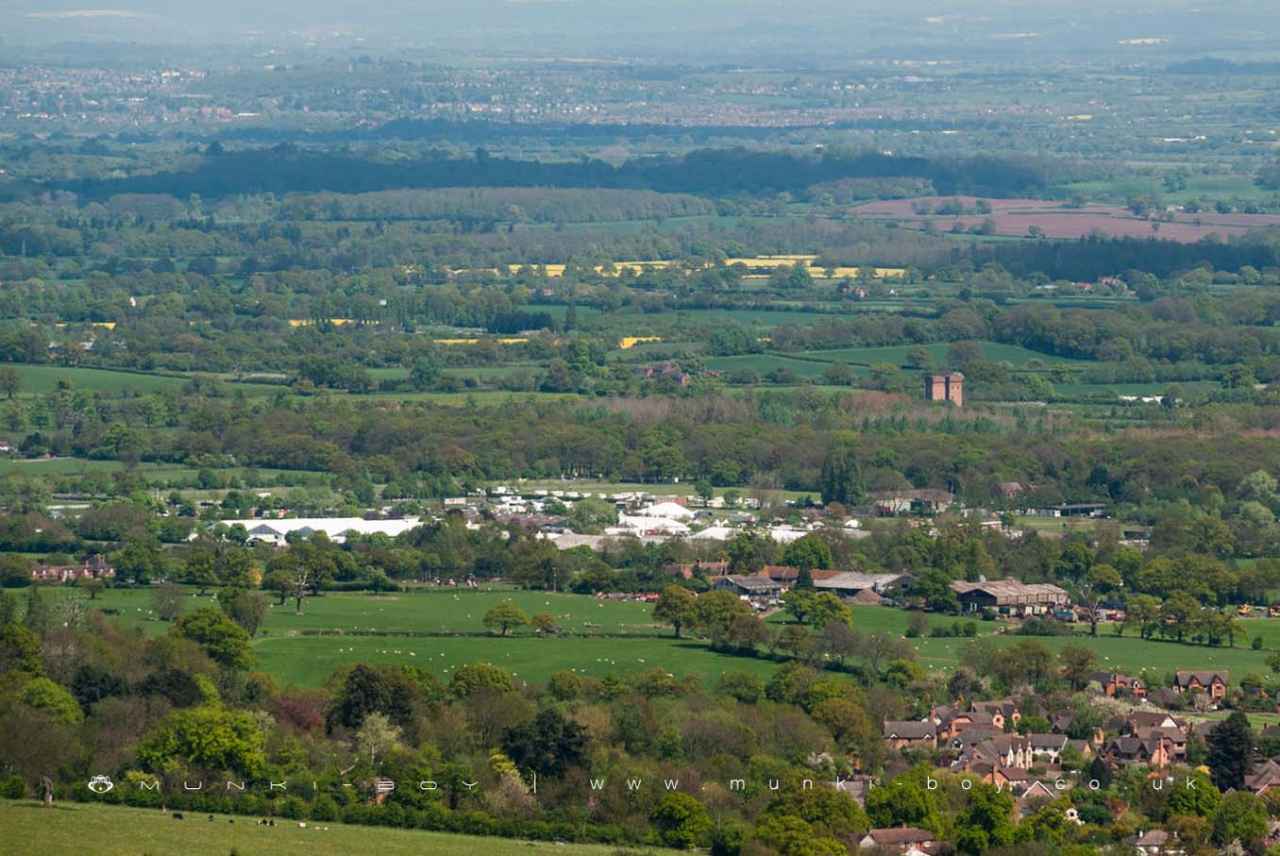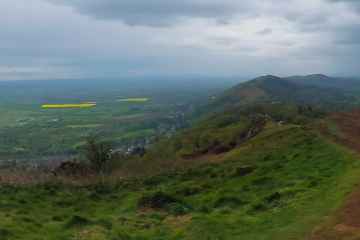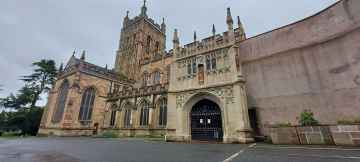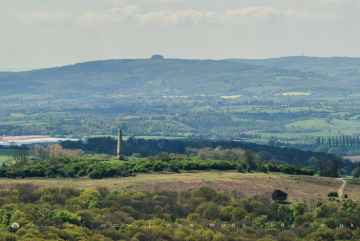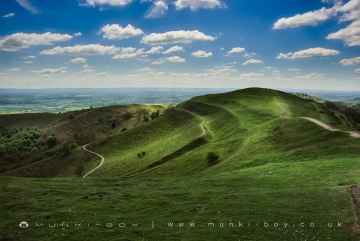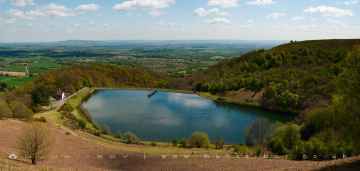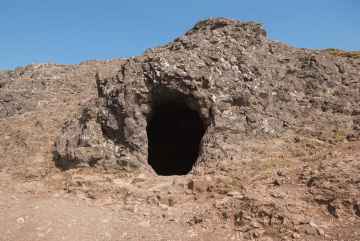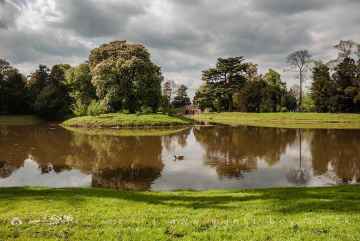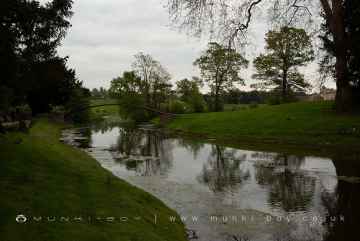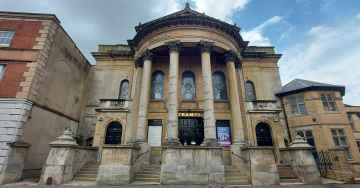Malvern is a Town in the county of Worcestershire.
Malvern is a spa town in Worcestershire, in England. It lies at the foot of the Malvern Hills, a designated Area of Outstanding Natural Beauty.
The name Malvern is derived from the ancient British or old Welsh moel-bryn, meaning ‘Bare or Bald Hill’.
Malvern is largely Victorian, but the oldest parts of the town are around the Priory Church. The church was founded in 1085 when Benedictine monks established a priory at the foot of the highest peak of the Malvern Hills.
Archaeological evidence suggests that Bronze Age people had settled in the area around 1000 BC. Iron and Bronze Age forts and tracks ran along the hills. Flint axes and arrowheads found in the area are attributed to early Bronze Age settlers. The ‘Shire Ditch’, a late Bronze Age boundary earthwork, dating from around 1000 BC, was constructed along part of the crest of the hills near the site of later settlements.
During the 19th century Malvern developed rapidly from a village to a sprawling urban area, owing to its popularity as a hydrotherapy spa based on the therapeutic qualities attributed to its springs. It was the Georgian desire of taking the waters and then later the Victorian demand of the water cure that transformed Malvern into a Water Cure town. The first Water Cure house was built in 1845.
You can still see many of these impressive buildings, which are in use as public buildings.
Malvern postcode: WR14 2HX
There are great places to visit near Malvern including some great towns, villages, historic buildings, historic monuments, hills, hiking areas, ancient sites, lakes, caves, country parks, rivers and streams, woodlands, cities and shopping centres.
Malvern, Evesham, and Redditch are some of Malvern best towns to visit near Malvern.
There are a number of villages near Malvern including Lower Wyche, and Callow End.
There are a number of historic buildings near Malvern including Great Malvern Priory, Croome Court, The Temple Greenhouse, Church of St Mary Magdalen at Croome, Bridges to the Island Temple at Croome, Icehouse at Croome, and Island Pavillion at Croome.
The area around Malvern features a number of interesting historic monuments including Eastnor Obelisk, Druid Statue at Croome, and The Grotto at Croome.
The Malvern Hills, British Camp, Table Hill, End Hill, Worcestershire Beacon, Pinnacle Hill, and North Hill are some of Malvern best hills to visit near Malvern.
Malvern's best nearby hiking areas can be found at The Malvern Hills, Clent Hills, Old Hills, and Broadway Tower Country Park.
There are a number of ancient sites near Malvern including British Camp, and Midsummer Hill.
British Camp Reservoir, and Lake at Croome are great places to visit near Malvern if you like lakes.
There are a number of caves near to Malvern including The Hermit's Cave.
The area around Malvern features a number of interesting country parks including Croome, Clent Hills Country Park, Broadway Tower Country Park, and Arrow Valley Country Park.
Places near Malvern feature a number of interesting rivers and streams including Croome River.
Woodlands to visit near Malvern include Clent Hills.
The area close to Malvern boasts some of the best cities including Worcester.
Don't miss Kingfisher Shopping Centre's shopping centres if visiting the area around Malvern.
Malvern History
There are some historic monuments around Malvern:
Places to see near Malvern
History of Malvern
Little is known about Malvern over the next thousand years until it is described as “an hermitage, or some kind of religious house, for seculars, before the conquest, endowed by the gift of Edward the Confessor”.:14 The additions to William Dugdale’s Monasticon include an extract from the Pleas taken before the King at York in 1387, stating that there was a congregation of hermits at Malvern “some time before the conquest”. Although a Malvern priory existed before the Norman Conquest, it is the settlement of nearby Little Malvern, the site of another, smaller priory, that is mentioned in the Domesday Book. A motte-and-bailey castle built on the top tier of the earthworks of the British Camp just before the Norman Conquest was probably founded by the Saxon Earl Harold Godwinson of Hereford. It was destroyed by King Henry II in 1155. The town developed around its 11th-century priory, a Benedictine monastery, of which only the large parish church and the abbey gateway remain. Several slightly different histories explain the actual founding of the religious community. Legend tells that the settlement began following the murder of St. Werstan, a monk of Deerhurst, who fled from the Danes and took refuge in the woods of Malvern, where the hermitage had been established.:11 St Werstan’s oratory is thought to have been on the site of St Michael’s Chapel, which is believed to have stood on the site of Bello Sguardo, a Victorian Villa, which was built on the site of Hermitage Cottage. The cottage was demolished in 1825 and ecclesiastical carvings were found in it, along with a mediaeval undercroft, human bones, and parts of a coffin. Although the legend may be monastic mythology, historians have however concluded that St. Werstan was the original martyr. The first prior, Aldwyn, founded the monastery on his bishop’s advice, and by 1135 the monastery included thirty monks. Aldwyn was succeeded by Walcher of Malvern, an astronomer and philosopher from Lorraine in France, whose gravestone inside the priory church records details that the priory arose in 1085 from a hermitage endowed by Edward the Confessor. An ancient stained glass window in the Priory church depicts the legend of St. Werstan, with details of his vision, the consecration of his chapel, Edward the Confessor granting the charter for the site, and Werstan’s martyrdom.












